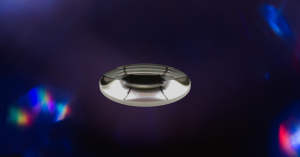Key Takeaways
- The Lens Chief Ray Angle (CRA) defines the angular relationship between the optical axis and the chief ray of the lens within an imaging system, crucial for optimal performance of the image sensor.
- Alignment between the lens chief ray angle and the image sensor’s pixel acceptance angle is essential for achieving high-quality images in digital imaging.
- Micro-lens shifting in CMOS sensors is utilized to accommodate various applications within imaging systems, such as mobile phones and medical devices, impacting the lens chief ray angle.
- Proper consideration of the lens chief ray angle is necessary in optical system design to ensure compatibility and prevent artifacts in images captured by the image sensor.
Exploring the Significance of the Lens Chief Ray Angle (CRA)
The Chief Ray Angle (CRA) lens is a pivotal concept in the field of optics and imaging systems, and it plays a profound role in shaping the quality of captured images. To comprehend its importance fully, let’s delve deeper into the nature and implications of the CRA.
At its core, the CRA is the angular relationship between two critical components within an optical system: the optical axis and the chief ray of the lens. To grasp this concept more comprehensively, it’s essential to break it down into its constituent elements:
Chief Ray: The chief ray, which is central to understanding CRA, is a specific ray of light that originates from an object point and passes through the aperture stop of the optical system. It takes a path guided by the line connecting the center of the entrance pupil to the object point. This chief ray represents a fundamental ray within the optical system and serves as a cornerstone for analyzing optical behavior.
Optical Axis: The optical axis is the principal reference line within the optical system. It serves as the central axis around which all optical elements, such as lenses and mirrors, are arranged. The CRA is defined concerning this optical axis.

Now, let’s explore why the CRA is a matter of significant consequence:
Image Quality in Various Media: The importance of the CRA becomes apparent when considering the imaging medium in use. In the context of traditional silver-halide film, the CRA’s impact on image quality is relatively limited. This is due to the isotropic angular response of film grain, which means that the direction of light incidence has minimal effect on the final image. However, when transitioning to modern electronic imaging systems like CCD or CMOS imagers, the significance of the CRA amplifies.
Modern Digital Imaging: In the realm of digital imaging, achieving the highest image quality necessitates meticulous attention to the alignment between the image sensor’s pixel acceptance angle and the lens CRA. This alignment ensures that light rays are optimally captured by the sensor, leading to sharper and more accurate images. Misalignment can result in suboptimal image quality.
Micro-Lens Shift and Application Diversity: In miniature-sized CMOS image sensors, a technique known as micro-lens shift is employed. This technique involves adjusting the position of micro-lenses on individual pixels, often shifting them from the center to the periphery of the image sensor. Such shifts are made to accommodate various applications, including the need for thin lenses in mobile phones and wafer-level stack fabrication.
Medical Imaging Considerations: In medical imaging, especially in applications like endoscopes where space constraints are severe, image sensors from mobile phone technology are frequently adapted. Here, the CRA of the lens must be considered to ensure compatibility with the image sensor. Mismatched CRAs can result in undesirable artifacts in images, such as shadows or color mismatches.
In essence, the Lens Chief Ray Angle is a fundamental parameter in optical design and digital imaging. Its correct alignment is pivotal for achieving high-quality images and avoiding artifacts, making it a critical consideration in various imaging systems and applications, from consumer electronics to medical diagnostics.
Please contact Avantier if you’d like to schedule a consultation or request for a quote on your next project.
GREAT ARTICLE!
Share this article to gain insights from your connections!



